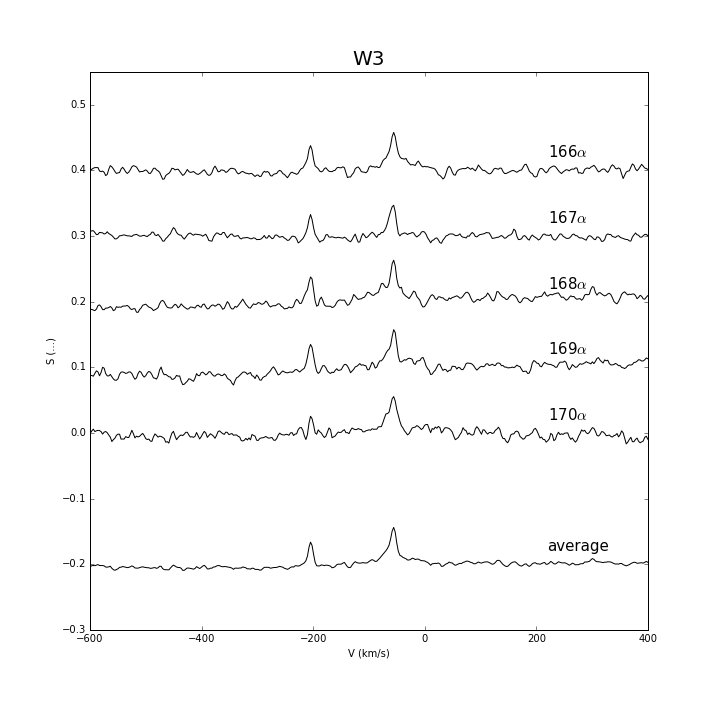Daily Image
19-10-2017Recombination lines with Apertif
| Submitter: | Tom Oosterloo (for Apertif Commissioning Team) |
| Description: | The motivation for building Apertif is to increase the survey speed of the WSRT and to turn it into a radio survey telescope. This is achieved by increasing the field of view using phased-array feeds to make 39 primary beams on the sky at the same time. This, effectively, creates 39 WSRTs which work in parallel, and makes the WSRT 39 times faster for surveying the sky. However, not everybody is aware that Apertif increases the survey speed of the WSRT by an extra factor two by doubling the bandwidth of the receivers. For spectral line observations of atomic hydrogen this doubles the distance out to which it can be detected. But there is another application. To illustrate this, the broad observing band of Apertif was used to observe the radio recombination lines coming from the Galactic star forming region W3 (discovered by Gart Westerhout in the mid-fifties using the Dwingeloo telescope, hence the W in W3!!). Radio recombination lines are emitted by hydrogen gas that has a temperature around 10000 degrees C. Because the gas is fairly hot, most of it is ionised (i.e. protons and electrons are freely floating around), but occasionally it happens that a proton and an electron bind to each other (forming a hydrogen atom), a process that is called recombination. In the initial stages of this recombination, the electron 'sits' in a high energy level of the atom. But every now and then, the electron pops to a lower energy state and every time it does so, it emits a photon with an energy exactly that of the energy transition. This means that over time, many photons are emitted, each with an energy (or frequency) characteristic of the energy jump it did. Other elements, like carbon and sulphur, do similar things. At the frequencies Apertif operates on, in practise this means that every 24 MHz one can detect a spectral line (a radio recombination line), each line corresponding to a different 'energy jump'. This, in turn, means that in the 300-MHz wide observing band of Apertif, several of these recombination lines can be detected in a single observation (see figure). And, this is the trick of course, they can be averaged to significantly improve the signal-to-noise. This is important because recombination lines are faint. The figure shows spectra extracted from an Apertif observation of W3 with five of the recombination lines detected. For each row, the hydrogen recombination line is the stronger one on the right. The line on the left-hand side is a combination of similar lines from carbon and sulphur. The improvement of the averaging is obvious. Careful modelling of the hydrogen line shows it comes from a mix of relatively cold (5000 C) and hotter gas (10000 C) and that the carbon and sulphur lines are associated with the colder hydrogen gas, not with the warmer gas. On the single lines such modelling is not possible, but the average gives clear answers. |
| Copyright: | ASTRON |
| Tweet |  |
